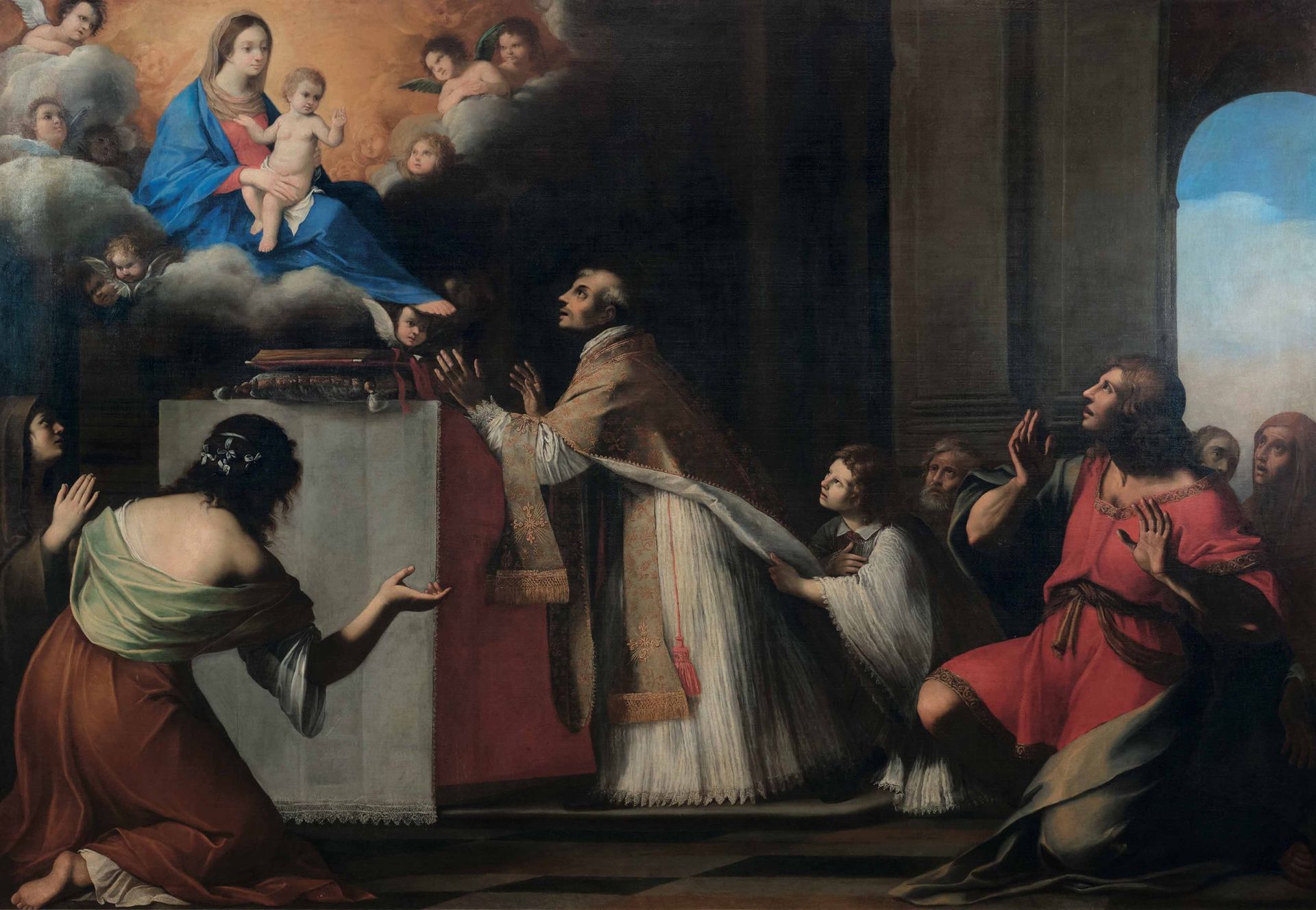Description
Niccolò Tornioli (Siena 1606 - Roma 1651), attribuito a, Apparizione della Madonna con il Bambino a un santo sacerdote mentre celebra una funzione
oil on canvas, cm 342x245, "The painting is characterized by a clear narrative setting that depends on the composition of Florentine history. A structural whole that is interpreted with devout characters, of a delicacy of expressions, types and gestures dependent on the art of Francesco Rustici called the Rustichino (Siena 1592-1626), characters that direct us to Siena. The compositional rigor of the Florentine school had been imported into the city of the Palio by Pietro Sorri (San Gusmé 1556-Siena 1622), a pupil of Passignano, and elaborated into a fresh contemporary tale by Rutilio Manetti (Siena 1571-1639). Manetti had then abandoned it, becoming fond of Caravaggio's style, which was to become a driving force in the Terre di Siena. However, artists such as Crescenzio Gambarelli (Siena, news from 1591 to 1622) and Astolfo Petrazzi (Siena 1580-1653) and other painters had appropriated the rigorous Florentine composition, as shown in the lunettes of the lower Oratory of San Bernardino in Siena. For one of these lunettes, San Bernardino in front of Martin V, whose quality far exceeds the possibilities of the artists mentioned above, I proposed the name of Niccolò Tornioli (Marco Ciampolini, Pittori Senesi del Seicento, Siena, Nuova Immagine Editrice, 2010, pp. 870, 887, figs. on pp. 889 and 890) because of the obvious similarities of the characters with those in the engravings in the booklet of Federico IV Borromeo's thesis, held in Siena in 1634 (Theoremata Praescriptionis ex Alexandri Papae III [...], Senis, ex Typographia Bonettorum, Typis Publicis, M.DC.XXXIV, Siena, Biblioteca Comunale, XIV.F.28; Annalisa Pezzo, La tesi a stampa a Siena nei secoli XVI e XVII. Catalogo degli oposcoli nella Biblioteca Cominale di Siena, Cinisello Balsamo, Silvana editoriale, 2011, pp. 39-41, 117-119 n. 32). The following year Tornioli followed the prelate to Rome, becoming his official painter. The work in question, like the lunette mentioned above, seems to be linked to this period, that is, to Tornioli's production after 1631, the year of the first documented work that has survived (the Crucifixion in the church of San Niccolò in Sasso, known as Monnagnese), and before 1635-1637, when Niccolò worked for Borromeo. This Apparition, like the Crucifixion mentioned above, incorporates Emilian influences in a palimpsest of compositional rigor and devout participation in the event, reminiscent of the experiences of late Sienese Mannerism. But he also expands the scene and opens it up to neo-Venetian influences, as in the two vast compositions with the Vision of St. John the Evangelist in Pathmos and St. Sebastian cured by the pious women, the only works so far traced among those painted by the painter for Borromeo, now preserved in Palazzo Marino in Milan (Anna Elena Galli, Federico IV Borromeo: scelte artistiche tra Milano e Siena, in Atti delle giornate di studi sul Caravaggismo e il naturalismo nella Toscana del Seicento, proceedings of the conference edited by Pierluigi Carofano, Siena, Certosa di Pontignano, 21 May 2005; Casciana Terme, Palazzo delle Terme, 24-25 May 2005, Pontedera, Bandecchi &Vivaldi Editori, 2009, p. 309, figs. 1, 2). It is true that in the latter everything is more vibrant, from the drawing, to the sulphurous atmosphere, to the colours. But the Virgin who sits on the clouds of the Vision of St John the Evangelist, though of more fluid lines and matter, is sister to that in the Apparition and even more consanguineous are the little angels splashing here and there in the glories of the two paintings. The same can be said of St. John the Evangelist, who is associated with the astonished young man placed on the right of our painting, led with a profile reminiscent of that of the mourners of the Crucifixion of Monnagnese. Certainly we do not have many elements to describe Tornioli's activity in those four years between 1631 and 1635, and this induces caution, but the work under examination has all the characteristics to represent an excellent testimony of Niccolò's production in that period". We would like to thank Prof. Marco Ciampolini for the attribution of the painting and the critical card.
67
Niccolò Tornioli (Siena 1606 - Roma 1651), attribuito a, Apparizione della Madonna con il Bambino a un santo sacerdote mentre celebra una funzione
